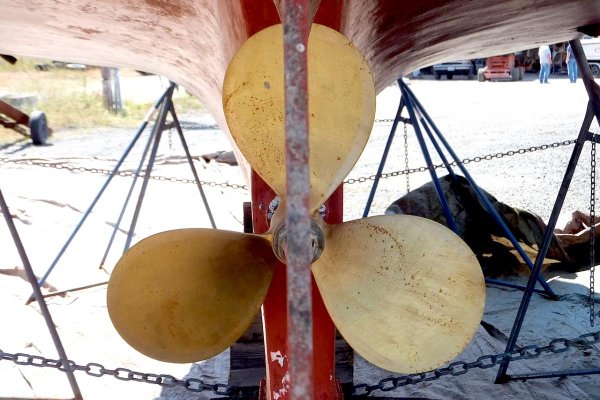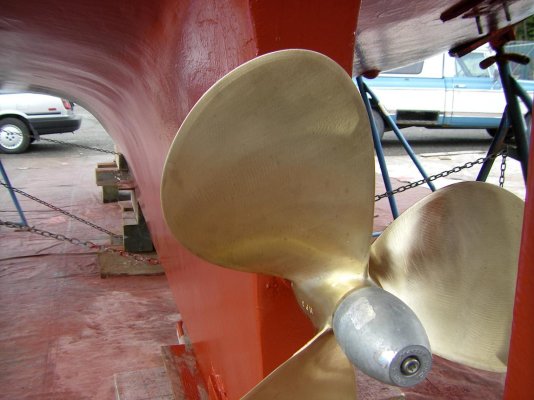The fewer blades the more efficient the prop is. The more blades the smoother/less vibration will be generated when it turns.
Theoretically speaking the most efficient prop for moving water would have one blade, but it'd be a bitch to balance.

Also, the fewer blades the better the prop will "back." In other words, it will have less prop walk. Could be a good thing in a single engine boat, but not a good thing in a twin with counter-rotating props where lots of prop walk is what you want.
Some boats with powerful engines need more blades to make use of that power. And sometimes it's a matter of utilizing the power
and minimizing the vibration. For example our friends with a 36' custom lobsterboat had the boat re-engined with a 420 hp Cat. The prop was originally a four-blade. But they were't getting the kind of performance from the boat they thought they should be getting so the shop suggested a five-bladed prop. This improved the performance to a noticeable degree.
So lots of variables. But the basic rule of fewer = efficiency, more = smoothness tends to hold true.
Our boat was built with a pair of three-bladed props with 24" diameter and 17" and 18" pitches. A previous owner replaced these for whatever reason with a pair of four-bladed props ostensibly to the same specs. Perhaps he wanted more maneuvering power (propwalk) from the props, I don't know.
When we thought we needed new props the prop shop we use in Seattle determined that in fact the props were physically fine but had been horribly set up prior to our buying the boat (so by somebody in the SFO Bay area).
On our shop's recommendation they pitched the blades 1" down because they said as a general rule a 4-bladed prop should have 1" less pitch than the same size three-bladed prop on the same boat. They also reduced the diameter of the 4-bladed props by an inch but that was for another reason.




